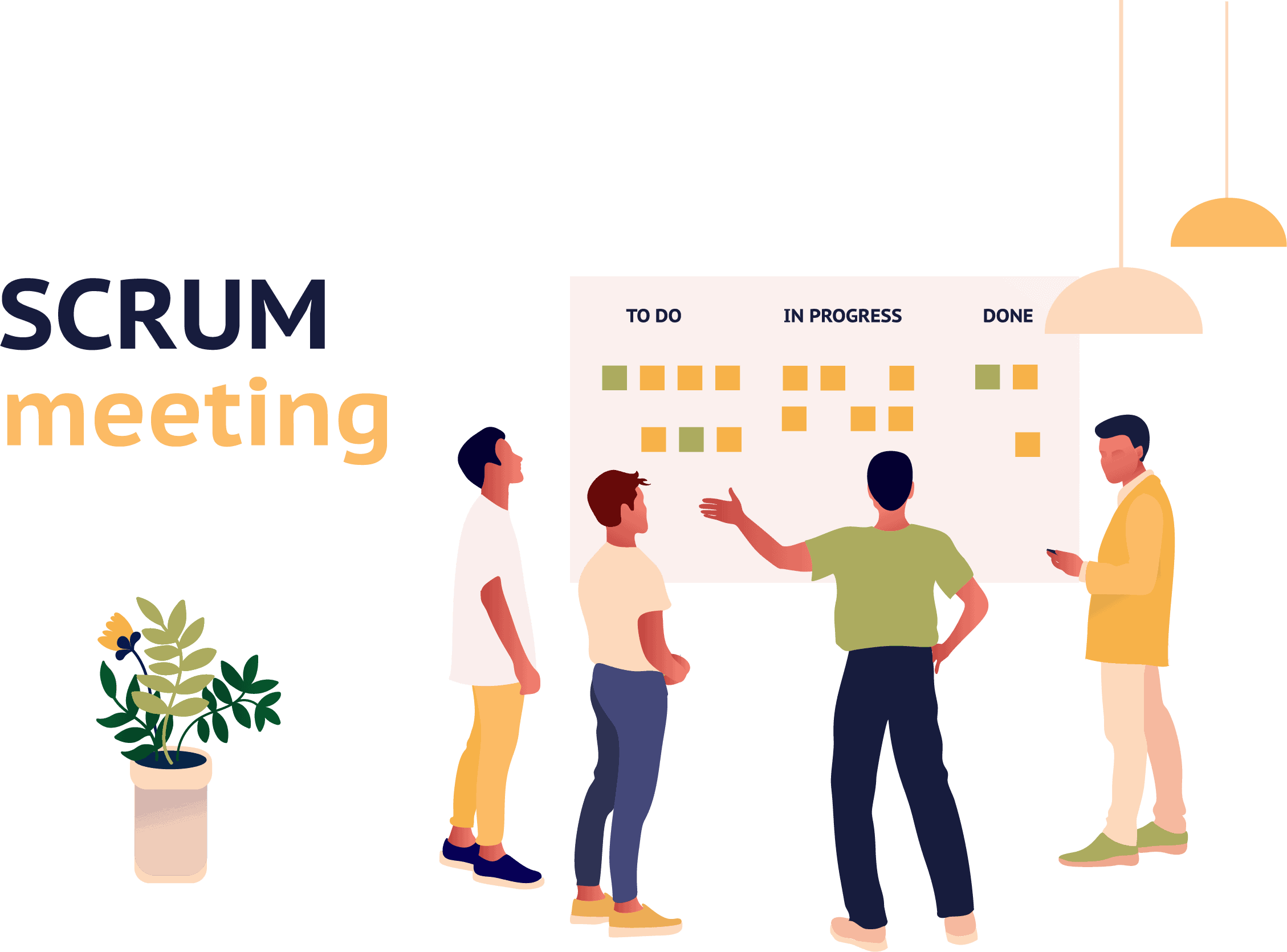
Making the move from waterfall to an agile scrum environment can be a big move, but for many development teams, it’s definitely worth the transition. When you work in an environment that utilizes the scrum methodology, it’s likely this organization values open communication, collaboration and efficiency.
While we’ve already explored the basics of scrum in previous blog posts, and the fact that it features an incremental development process, what we haven’t delved into is the actual format of scrum meetings. Depending on team preferences and styles, these meetings take on different forms and timelines, but they all include characteristics of the scrum methodology.
These are the actual people involved and engaged throughout this process.
Responsible for for maximizing the value of the product and managing the product backlog.
This is a group of cross-functional team members who work together in a self-organizing, collective atmosphere and are responsible for delivering a potentially releasable increment of “done” product at the end of each sprint.
The manager for the team and responsible for promoting and supporting scrum. Scrum masters do this by helping everyone understand scrum theory, practices, rules, and values.
Now that there is a basic understanding of the team and scrum qualities, it is time to move on to the actual scrum process. This process becomes more of a cycle in terms of movement. If there is an issue or a setback, the process might move backward to resolve such issues. This cyclical process allows the project to easily continue forward as well.
This is where the agility of this method becomes vital. But for more of a visual, the scrum process begins with the sprint planning meeting and proceeds from there. Here is an overview of the different types of scrum meetings:
This meeting begins with the Product Owner. In this meeting the PO explains their vision and how the team should go about completing this step of the project. During this meeting, team members decide the amount of work they can complete within the sprint. This is also when the team moves work from the Product Backlog to the Sprint Backlog. This step requires a lot of planning and can take several hours for the group to decide on a finalized Sprint.
From the planning meeting, we move into the daily scrum meetings. Every single day for 15 minutes, the team gathers together to report any issues or progress on their tasks. Though brief, this meeting is an essential part of the scrum process. It is designed to keep all group members on track in a cohesive manner. Normally the Product Owner is present during all daily scrum meetings to assist in any way.
This meeting is used to showcase a live demonstration of the work completed. During this meeting the Product Owner, Scrum Master and stakeholders are present to review the product and suggest changes or improvements.
This meeting is held to facilitate a team’s reflection on their progress. The team speaks openly about their organizational concerns and teamwork. During this meeting, dialogue should remain friendly, non-judgmental and impartial. This review session is a key part of team building and development and it’s also very important for future scrum projects.
Last, is the backlog refinement meeting. In this meeting, team members focus on the quality and skill of the work involved during the sprints. This meeting is necessary for the business owners to connect with the development team and is used to assess the quality of the final product. This meeting involves important reflection on the team backlogs. These backlogs are often written in user story form and specify what makes the product useful to the consumer.
Scrum meetings involve so much more than these brief descriptions. There are many additional pieces of the scrum process including things like burndown charts and scaling, but the point of this post is to provide an overview of different kinds of scrum meetings.
Regardless of the type, all scrum meetings encourage organization, progress and resolutions. With this incremental and cyclical software development process, all members have the ability to communicate openly and honestly. With the process of scrum and the sprint timeline, projects are now efficiently completed with the help of a capable and cooperative team and Product Owner led by a skillful Scrum Master.
Provide your information to talk with a number8 Account Executive about your development needs today and feel what it’s like to be listened to before being sold a solution.
Let us help you add highly skilled, versatile developers to your team.